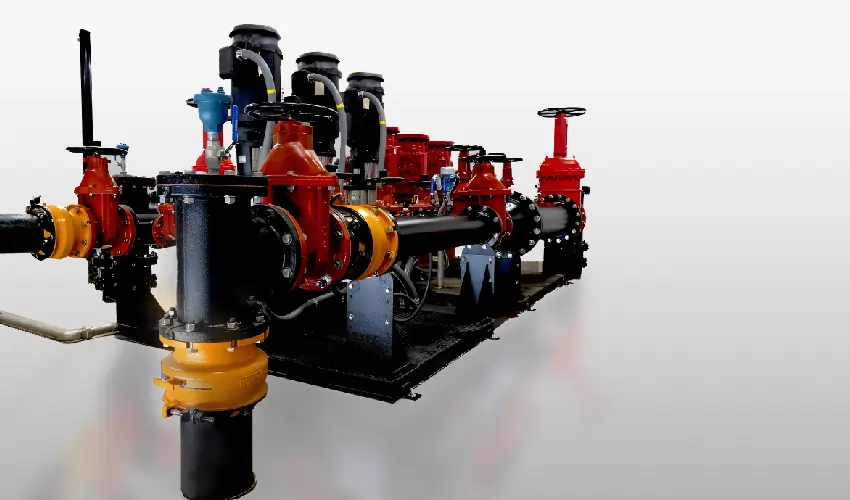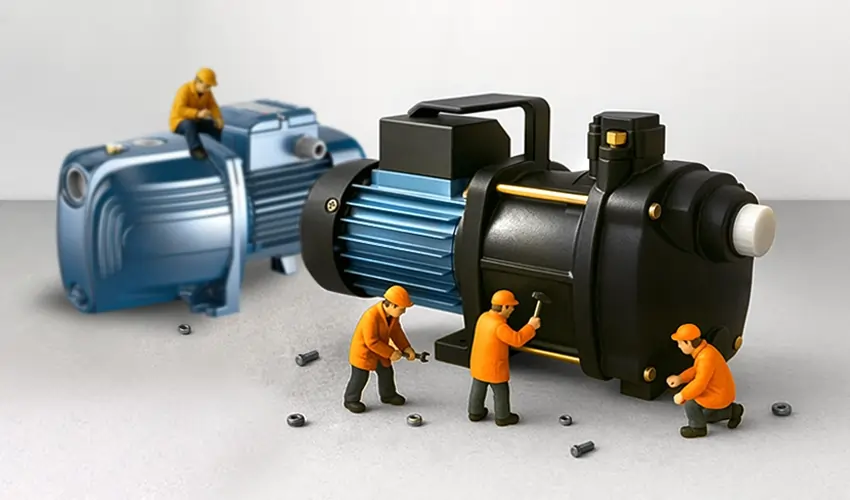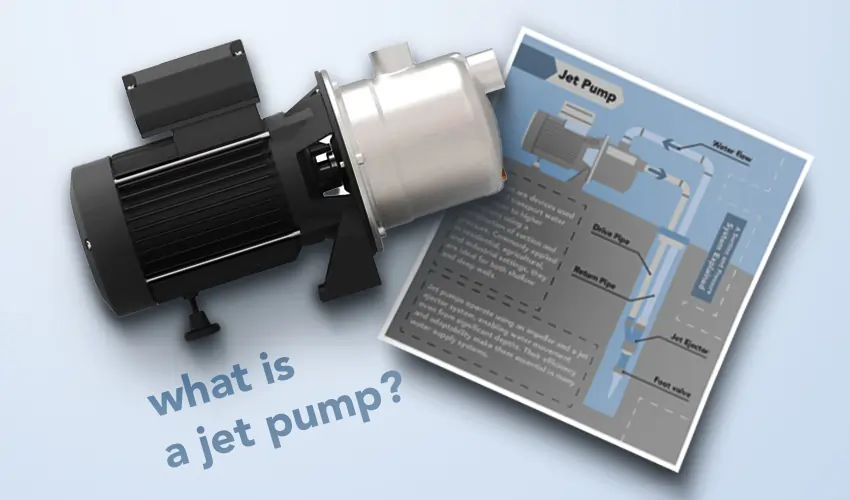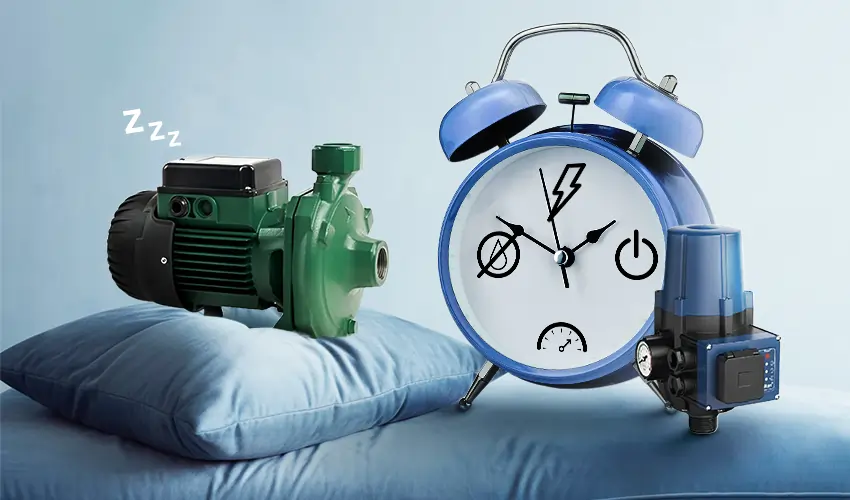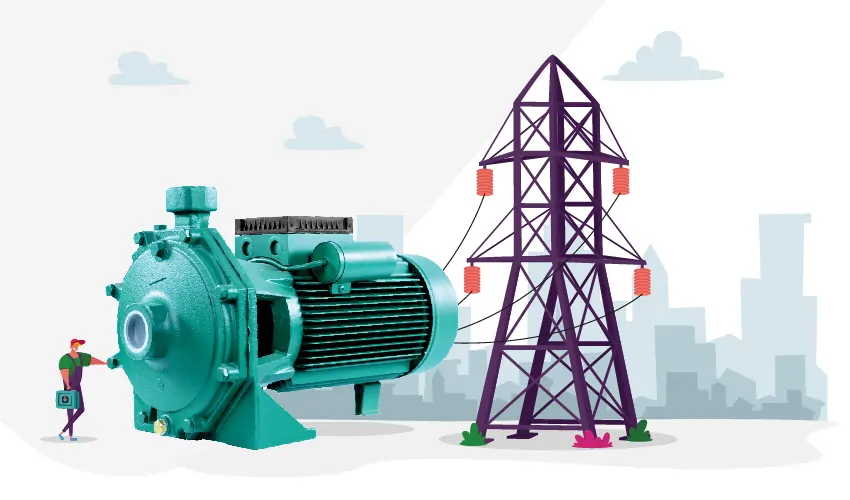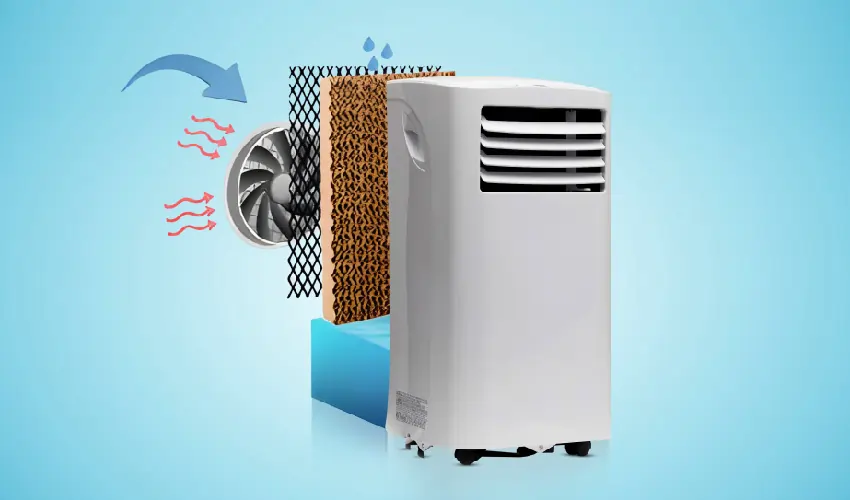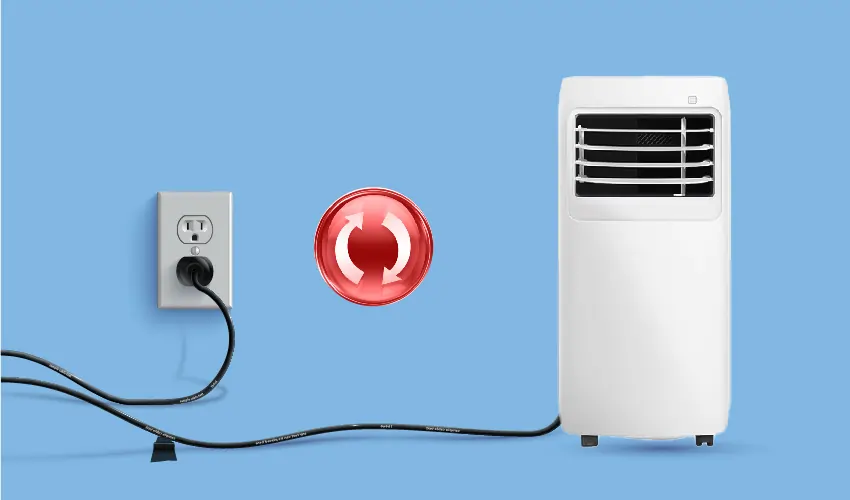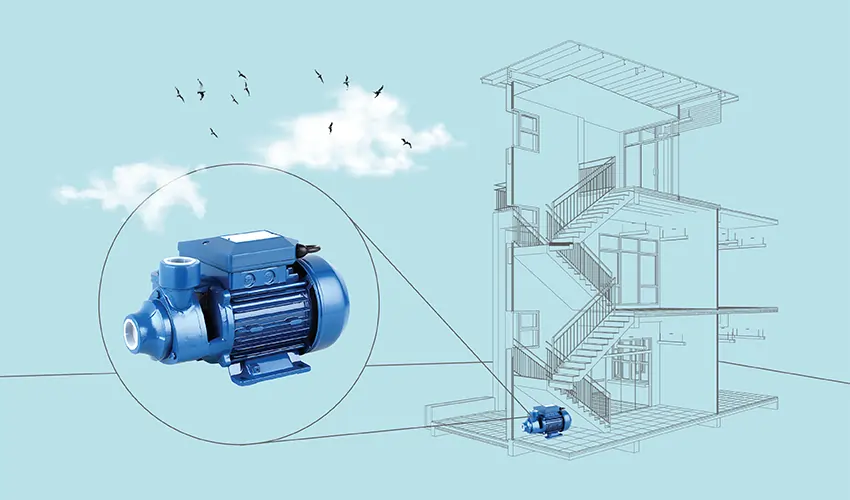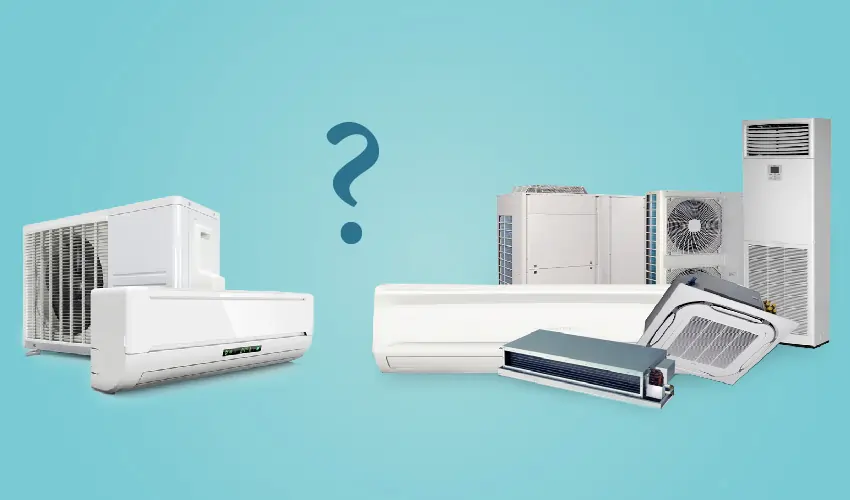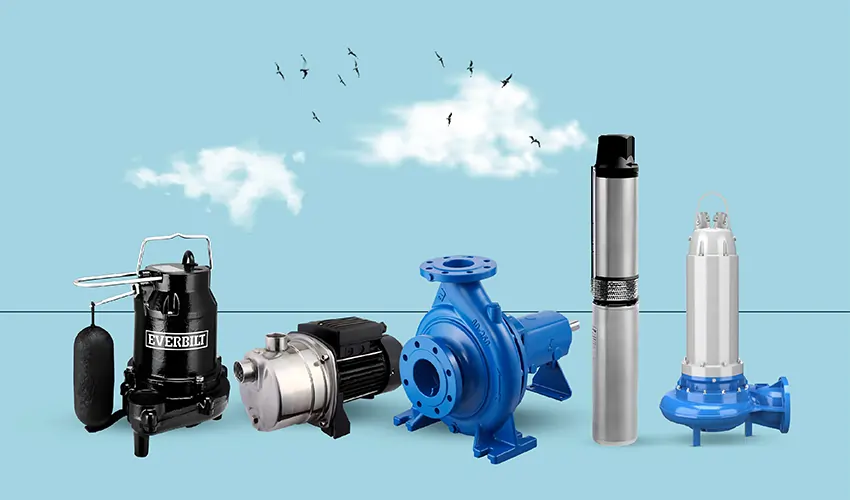Applications of Booster Pump Stations
Here are some common applications of booster pump stations:
- Municipal Water Supply
- Municipalities often use booster pump stations to maintain water pressure in areas with elevated terrain or where the natural topography makes it challenging to distribute water evenly.
- Commercial Buildings
- High-rise buildings, hotels, and office complexes may require booster pump stations to ensure adequate water pressure on upper floors. Boosting water pressure helps meet the demands of plumbing fixtures, fire protection systems, and other water-related appliances.
- Industrial Processes
- Various industrial processes, such as manufacturing, food and beverage production, and chemical processing, often require precise and consistent water pressure. Booster pump stations are used to ensure a reliable supply of water for these processes.
- Irrigation Systems
- Agricultural fields, golf courses, and other large-scale irrigation systems may utilize booster pump stations to distribute water efficiently across vast areas and to overcome elevation differences.
- Fire Protection
- Booster pump stations are integral components of fire protection systems in buildings and industrial facilities. These stations ensure that there is enough water pressure for firefighting equipment, such as sprinkler systems and hydrants.
- Mining Operations
- In mining operations, booster pump stations are employed to transport water over long distances or to overcome elevation changes within the mining site. This helps in various processes, including mineral processing and dust suppression.
- Oil and Gas Industry
- The extraction and processing of oil and gas often require the transportation of fluids over long distances. Booster pump stations are used to maintain the pressure necessary for the efficient movement of these fluids through pipelines.
- Wastewater Treatment
- Booster pump stations are used in wastewater treatment plants to move sewage and wastewater through the treatment process. This ensures that the sewage flows efficiently from one treatment stage to another.
- Desalination Plants
- Desalination facilities, which convert seawater into freshwater, may use booster pump stations to increase water pressure at various stages of the desalination process.
- Emergency Water Supply
- In emergency situations, such as natural disasters or equipment failures, booster pump stations can be crucial for maintaining water supply and pressure in affected areas.
Components of a Booster Pump Station
A booster pump station typically consists of several key components that work together to increase the pressure of liquids, such as water, within a system. The specific components may vary depending on the application and requirements, but here are the fundamental elements commonly found in a booster pump station:
- Pumps
- Booster pump stations are equipped with one or more pumps that are responsible for pressurizing the liquid. These pumps can be centrifugal or positive displacement pumps, depending on the specific needs of the system.
- Motor
- The pumps are driven by electric motors or other types of power sources. The motor provides the necessary mechanical energy to drive the pumps and circulate the liquid.
- Control Panel
- A control panel houses the electrical components and controls for the booster pump station. It includes features such as on/off switches, speed control, pressure sensors, and other monitoring devices to regulate the pump operation.
- Pressure Sensors
- Pressure sensors are used to measure the pressure within the system. The information gathered by these sensors is often fed back to the control panel, allowing for real-time monitoring and adjustment of pump performance.
- Check Valves
- Check valves are installed in the piping system to prevent backflow of water when the pump is not in operation. They ensure that water only flows in the desired direction.
- Pressure Tanks or Accumulators
- Pressure tanks or accumulators are used to store pressurized water. They help maintain a consistent pressure in the system, reduce cycling of the pumps, and provide a reserve of water for periods of peak demand.
- Piping and Fittings
- Pipes and fittings form the network through which water is transported from the source to the destination. Properly sized and configured piping is crucial to ensure efficient water flow and minimize pressure losses.
- Flow Meters
- Flow meters measure the rate of fluid flow through the system. This information is essential for monitoring and optimizing the performance of the booster pump station.
- Pressure Relief Valve
- A pressure relief valve is a safety feature designed to release excess pressure from the system. It helps prevent damage to the equipment and piping in the event of a pressure surge.
- Filters and Strainers
- Filters and strainers are installed to remove impurities, debris, or particles from the water before it enters the pump. This helps protect the pump and other components from potential damage.
- Isolation Valves
- Isolation valves are used to isolate specific sections of the piping system for maintenance or repair without affecting the entire system. They allow for the shutdown of specific components while keeping the rest of the system operational.
Operation and Maintenance of Booster Pump Stations
The operation and maintenance of booster pump stations are crucial to ensure the reliable performance and longevity of the equipment. Here are some general guidelines for the operation and maintenance of booster pump stations.
Operation
- Start-Up Procedures
- Follow the manufacturer’s guidelines for starting up the booster pump station.
- Gradually start the pumps to avoid sudden pressure surges in the system.
- Monitor the pressure and flow rates during startup to ensure smooth operation.
- Monitoring
- Regularly monitor pressure, flow rates, and other relevant parameters using pressure gauges, flow meters, and control panel displays.
- Implement a SCADA (Supervisory Control and Data Acquisition) system for remote monitoring and control, if applicable.
- Routine Inspections
- Conduct routine visual inspections of the entire booster pump station to check for leaks, unusual sounds, or any signs of wear or damage.
- Inspect electrical components, including wiring and connections.
- Scheduled Operation
- Develop a schedule for operating the booster pump station based on system demand patterns.
- Consider variable speed drives to adjust pump speed based on actual demand, improving energy efficiency.
- Emergency Procedures
- Establish emergency shutdown procedures and ensure that operators are trained to respond quickly to any abnormal conditions.
- Install alarms and automated shutdown systems for critical issues like pump failures or excessive pressure.
Maintenance
- Regular Maintenance Checks
- Follow a routine maintenance schedule as recommended by the pump manufacturer.
- Perform regular checks on pump seals, bearings, and couplings.
- Lubrication
- Ensure proper lubrication of pump bearings and other moving parts according to the manufacturer’s specifications.
- Monitor oil levels and replace lubricants as needed.
- Pump Impeller Inspection
- Periodically inspect pump impellers for signs of wear or damage.
- Clean impellers and remove any debris that may affect performance.
- Check Valves and Strainers
- Inspect and clean check valves and strainers regularly to prevent blockages and ensure proper flow.
- Electrical System Maintenance
- Check electrical components, including motor windings, contactors, and relays, for signs of wear or overheating.
- Tighten loose connections and replace faulty components promptly.
- Pressure Tanks
- Inspect pressure tanks for corrosion and damage.
- Check the air pressure in bladder-type pressure tanks and adjust as needed.
- Alignment and Vibration Analysis
- Regularly check pump and motor alignment to prevent excessive wear.
- Conduct vibration analysis to identify and address any imbalances or misalignments.
- Record Keeping
- Maintain a comprehensive log of maintenance activities, including dates, tasks performed, and any issues identified.
- Keep records of equipment specifications, manuals, and as-built drawings.
- Training
- Ensure that operators and maintenance personnel are adequately trained on the booster pump station’s operation, maintenance, and emergency procedures.
Conclusion
In conclusion, booster pump station public water system play a critical role in various industries and applications, ensuring the efficient and reliable distribution of liquids, particularly water. These stations are designed to increase the pressure of fluids, addressing challenges related to elevation changes, long-distance transportation, and varying demand patterns.

